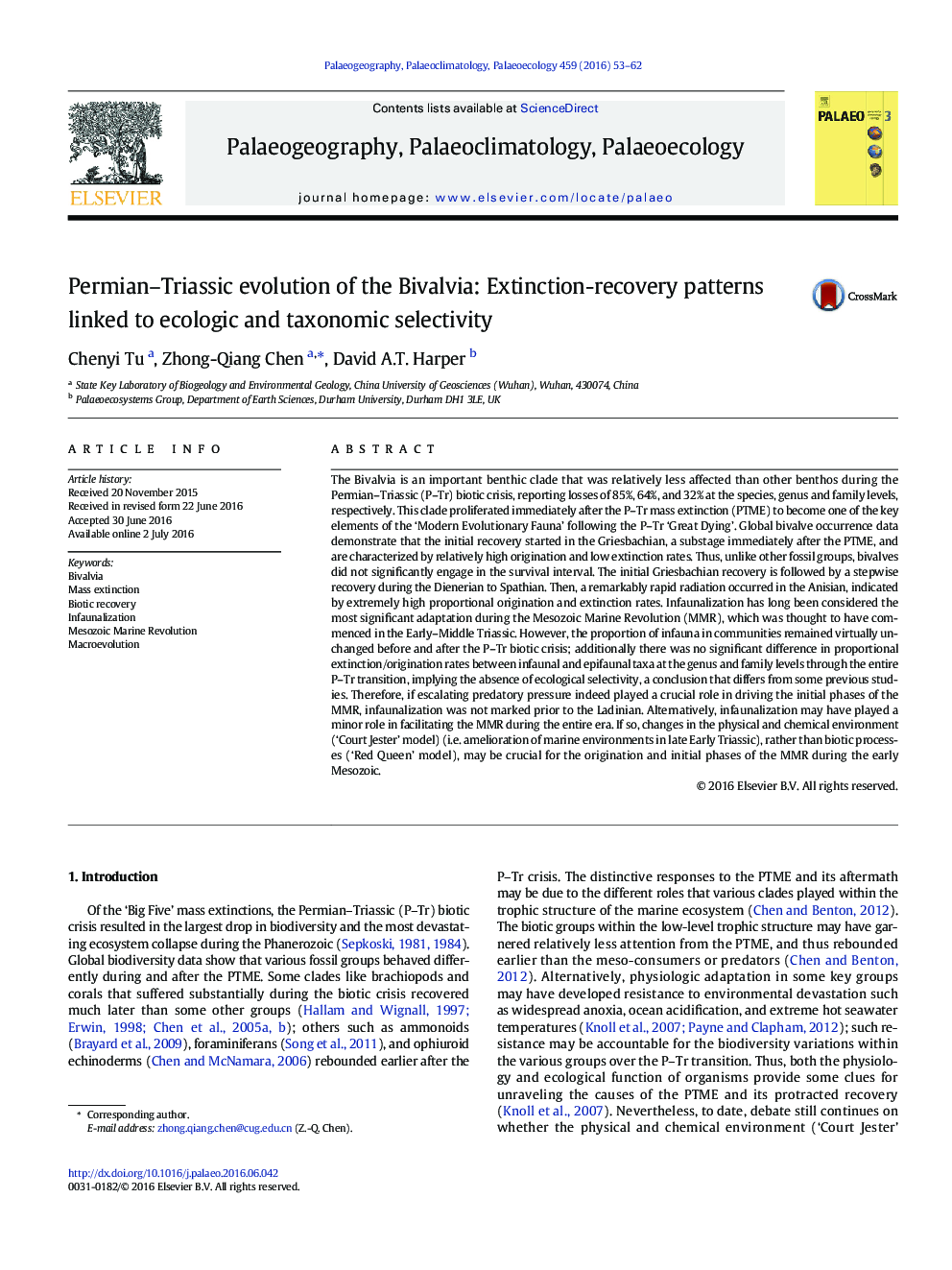| کد مقاله | کد نشریه | سال انتشار | مقاله انگلیسی | نسخه تمام متن |
|---|---|---|---|---|
| 4465622 | 1622132 | 2016 | 10 صفحه PDF | دانلود رایگان |
• The initial recovery of the Bivalvia started in the Griesbachian, immediately after the P–Tr mass extinction
• The Bivalvia underwent a stepwise recovery during the Dienerian to Spathian followed by a remarkably rapid radiation in the Anisian
• No significant ecologic selectivity between the infaunal and epifaunal taxa occurred throughout the P-Tr transition
• Environmental changes (‘Court Jester’ model), rather than biotic processes (‘Red Queen’ model), may be responsible for the initial evolution of the Mesozoic Marine Revolution
The Bivalvia is an important benthic clade that was relatively less affected than other benthos during the Permian–Triassic (P–Tr) biotic crisis, reporting losses of 85%, 64%, and 32% at the species, genus and family levels, respectively. This clade proliferated immediately after the P–Tr mass extinction (PTME) to become one of the key elements of the ‘Modern Evolutionary Fauna’ following the P–Tr ‘Great Dying’. Global bivalve occurrence data demonstrate that the initial recovery started in the Griesbachian, a substage immediately after the PTME, and are characterized by relatively high origination and low extinction rates. Thus, unlike other fossil groups, bivalves did not significantly engage in the survival interval. The initial Griesbachian recovery is followed by a stepwise recovery during the Dienerian to Spathian. Then, a remarkably rapid radiation occurred in the Anisian, indicated by extremely high proportional origination and extinction rates. Infaunalization has long been considered the most significant adaptation during the Mesozoic Marine Revolution (MMR), which was thought to have commenced in the Early–Middle Triassic. However, the proportion of infauna in communities remained virtually unchanged before and after the P–Tr biotic crisis; additionally there was no significant difference in proportional extinction/origination rates between infaunal and epifaunal taxa at the genus and family levels through the entire P–Tr transition, implying the absence of ecological selectivity, a conclusion that differs from some previous studies. Therefore, if escalating predatory pressure indeed played a crucial role in driving the initial phases of the MMR, infaunalization was not marked prior to the Ladinian. Alternatively, infaunalization may have played a minor role in facilitating the MMR during the entire era. If so, changes in the physical and chemical environment (‘Court Jester’ model) (i.e. amelioration of marine environments in late Early Triassic), rather than biotic processes (‘Red Queen’ model), may be crucial for the origination and initial phases of the MMR during the early Mesozoic.
Journal: Palaeogeography, Palaeoclimatology, Palaeoecology - Volume 459, 1 October 2016, Pages 53–62
